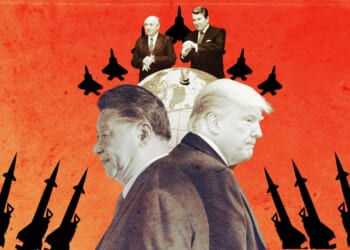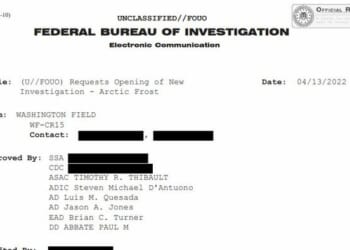Fifty years ago this week, the “gales of November” came early to Lake Superior, and the lake freighter Edmund Fitzgerald sank with the loss of all 29 souls aboard. Compare the dangers those men faced when the waters were “too rough to feed ya” to the purported risks faced by the “Fired Four,” a group of Teen Vogue reporters let go last week. The Conde Nast journalists’ union has staked its reputation on defending the reporters after they were terminated for haranguing a human resources official in public.
Things exist for a reason
Those who disagree with Big Labor’s modern policy positions can sometimes forget why workmen in the early industrial era found the need to organize. As we have written:
Mass industrialization that took off following the end of the conflict drew millions out of farm work and into cities to work in factories and on railroads and to build industrial America.
Those workers found difficult conditions waiting for them. Pay and opportunities to work were inconsistent, surging and falling with the business cycle, with recessionary periods frequent. The 1873–1879 “Long Depression” was the longest recession in post–Civil War history identified by the National Bureau of Economic Research. Daily work hours when work was available were often long, with 12-hour workdays not unthinkable. Economic research suggests 10-hour days were standard by 1880. Industrial accidents causing injury or death were common, and insurance for injured or killed workers was often not available. Child labor and racial discrimination were common. While economic research has cast doubt on the harshest claims of de facto indenture to the “company store,” living and provisioning arrangements run by employers never sat well with a public or workers seeking small-r-republican independence.
By the time the Fitzgerald’s “crew and good captain well-seasoned” set out on their doomed voyage, the workingmen’s associations and labor unions of that early industrial period and their successors could claim real improvements in their members’ condition. Their land-based colleagues had campaigned for the codification of the eight-hour standard workday at the federal level. New Deal legislation had compelled employers to bargain with labor unions.
Like any special interest, organized labor could act against the national interest. The Jones Act, a 1920 law supported by organized labor and specialized U.S.-based maritime shippers (unions and their members’ employers defending the same policy is a major red flag for special-interest rather than national-interest policy), has had numerous negative consequences on American maritime readiness and the cost of living in America’s insular territories and non-contiguous states.
By November 1975, America’s industrial workers could reasonably feel that their organizations had done a fair job of getting them “more” than their forebears had at the beginning of the industrial era.
After victory, the insanity
But advocacy groups do not just “go away,” even if the federal government makes their original demands into relatively uncontroversial national policies. While labor unions remain the representative form of choice for some workers, they are hardly as necessary to advance the interests of working men as they were fifty or a hundred years ago. Today, according to the latest federal statistics, less than six percent of the private-sector workforce is unionized.
When an advocacy group’s numbers shrink, the result is often more radicalism, not a sprint to the center. That is the case with contemporary Big Labor, and the saga of the “Fired Four” at Conde Nast is illustrative.
The controversy began when Conde Nast broke up its Teen Vogue property, incorporating the former magazine into its Vogue.com brand. But, as those whose memories stretch back to the frequently absurd days of the first Trump administration might remember, this was more than a fashion magazine taking its teenager-focused vertical under its wing. Teen Vogue had evolved into a strangely mass-market outlet for radical-left politics (with a more adult readership than its name suggested, for good measure).
The NewsGuild of New York, the union affiliated with the forthrightly leftist Communications Workers of America union that represents Conde Nast writers including the Teen Vogue staff, condemned the company for “blunt[ing] the award-winning magazine’s insightful journalism at a time when it is needed the most.”
Then four NewsGuild members were fired. Unlike back in the bad old days, when (according to mostly-legend) the boss would fire you for looking at him funny or voting for a different presidential candidate, these intrepid defenders of the sans-culottes in, uh, major metropolitan magazine journalism were canned for allegedly buttonholing a human resources officer and shouting public-relations questions at him when they should have been doing their jobs.
Conde Nast and the union have now filed National Labor Relations Board charges and counter-charges against each other over the incident. The union is calling on the public to stand up for the “Fired Four.”
A difference in kind
Unions are not what they were in the days of the 29 men on the Edmund Fitzgerald, when men in industrial jobs perceived that they relied on them for safety and support. In the era of the “Fired Four,” they are little more than partisan-leftist advocacy groups happy to be defenders of the “insightful journalism” of a Marxism-curious magazine ostensibly aimed at teenagers and the “rights” of journalists to harangue their employers’ representatives in public.
Indeed, for many labor unions representing forthrightly leftist office workers and postgraduates (including postgraduate students), their positioning is a classic case of “skin-suiting.” By aping the aesthetics and rhetoric of maritime sailors, miners, tradesmen, builders, and factory-line men of past eras, the Bed-Stuy loft-radicals of Teen Vogue and the NewsGuild think they can steal their honor and public support.
Fifty years hence we will likely not be using this week to sing of the wreck of Teen Vogue, and the Brooklyn Journalists’ Cathedral will not toll its bell in honor of the “Fired Four.” Today’s radical-chic unionists can claim the honor and dignities of hard workers who went before them (in the case of the United Auto Workers, they can claim the union itself through changes in union membership). But they cannot hide from reality. Reporters push pixels, not tons of iron ore, and when demanding rights and protections against the vagaries of life, that matters.














